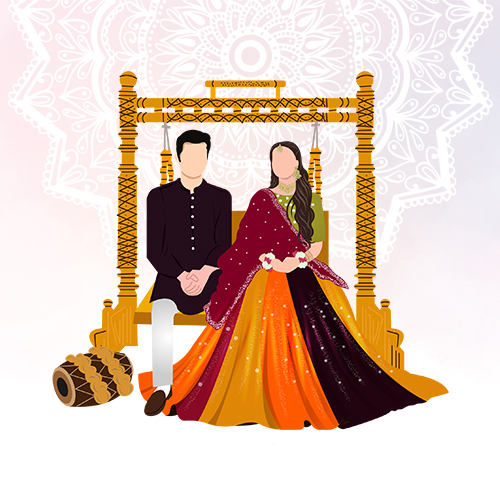
Roka Ceremony
The Roka ceremony is a significant pre-wedding ritual in Indian culture, marking the official union of the couple and their families. It is often seen as the formal announcement of the couple's engagement and the beginning of the wedding preparations. The term "Roka" comes from the Hindi word "rokna," meaning "to stop," signifying that the bride and groom have now been chosen and are committed to each other.
Roka Ceremony
-
Purpose:
- Formal Engagement: The Roka ceremony serves as the formal engagement where the families officially accept the relationship.
- Blessings: It is an occasion for both families to come together, give their blessings to the couple, and celebrate the start of their new journey.
-
Significance:
- Commitment: The ceremony signifies the commitment of the couple to each other and their intention to marry.
- Family Union: It marks the union of the two families, establishing a bond and mutual understanding.
-
Ritual Process:
- Preparation: Both families prepare by choosing an auspicious date and time, usually with the help of a priest or astrologer. They gather at the bride's home or a pre-decided venue.
- Exchange of Gifts: The families exchange gifts such as clothes, jewelry, sweets, fruits, and other items as a token of acceptance and goodwill.
- Blessings:
- Tilak Ceremony: The groom is often applied a tilak (vermilion mark) on his forehead by the bride's family as a mark of respect and acceptance.
- Arti and Prayers: An arti (prayer ritual) is performed for the couple, and they seek blessings from the elders.
- Ring Exchange (Optional): Although not always part of the Roka, some families may also exchange rings during this ceremony.
- Feast and Celebration: The ceremony usually concludes with a feast, where family members and close friends celebrate the occasion with music, dance, and a meal.
-
Regional Variations:
- Different regions in India have unique customs and traditions associated with the Roka ceremony. For example, in some North Indian traditions, the groom's family may also perform a similar ceremony called "Sagaai" or engagement, which might involve ring exchanges and grand celebrations.
-
Attire:
- The attire for the Roka ceremony is typically traditional and festive. The bride often wears a saree, lehenga, or salwar kameez, while the groom dons a sherwani, kurta-pajama, or other ethnic wear.
-
Post-Roka Rituals:
- After the Roka ceremony, both families begin the detailed planning for the wedding. This includes setting the wedding date, making arrangements for the various pre-wedding rituals, and preparing for the main wedding ceremony.
Cultural and Social Importance
The Roka ceremony is a cherished tradition in Indian culture, symbolizing the beginning of a lifelong partnership. It emphasizes the importance of family consent and blessings in the union of the couple. This event not only marks the commitment of the bride and groom but also serves as a joyous occasion for both families to bond and celebrate together.
By participating in the Roka ceremony, the couple and their families honor their cultural heritage and uphold the values of love, respect, and togetherness.
 Add Temple
Add Temple